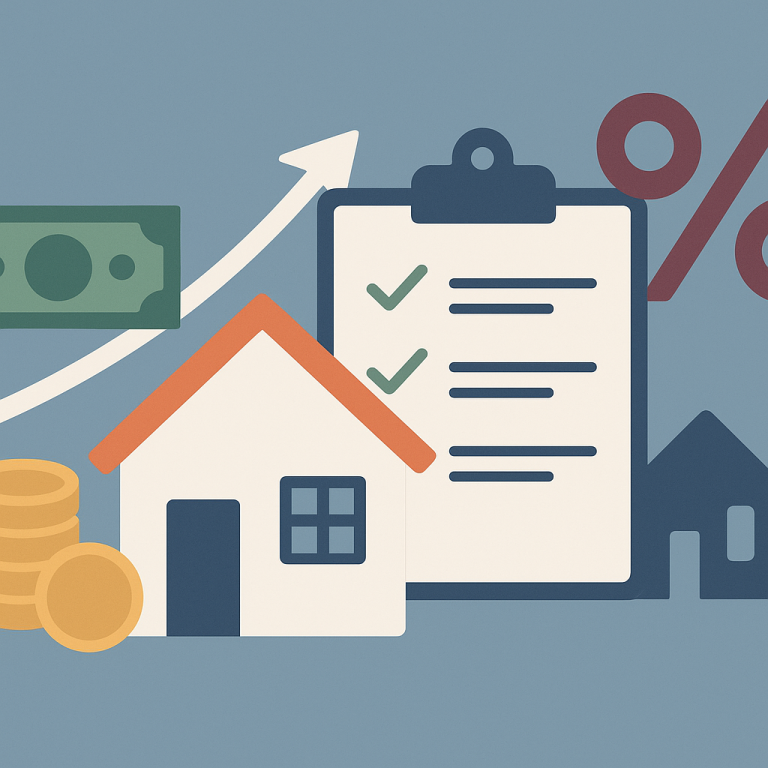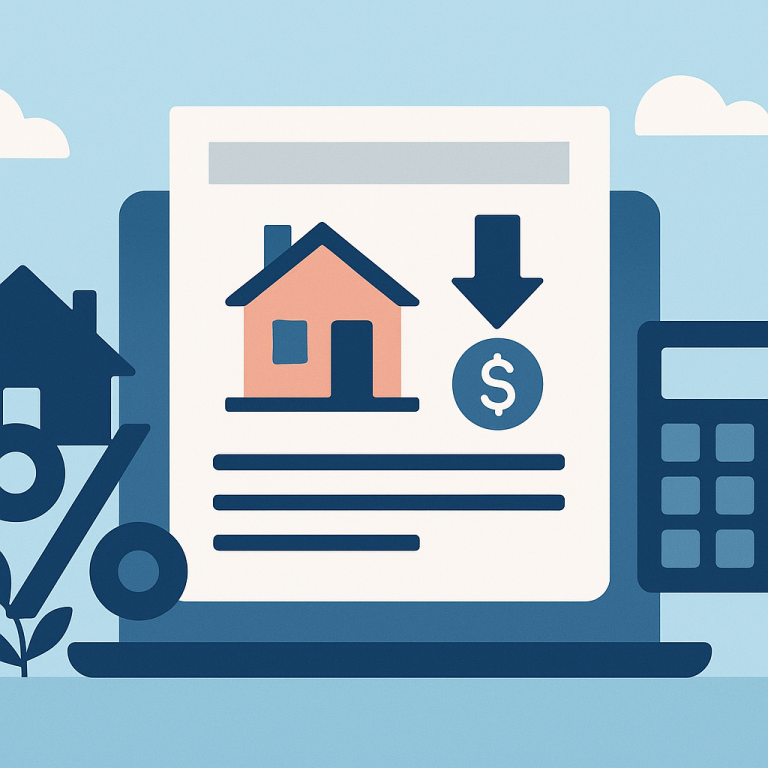Refinance guide bank statement refinance vs full doc differences
Bank Statement Refinance vs Full Documentation: What It Is and When It Makes Sense
A refinance that uses bank statements (a “bank statement refinance”) allows lenders to verify income by reviewing a borrower’s bank deposits over a 12- to 24-month period instead of relying primarily on W-2s, pay stubs, and tax returns. A full documentation (full doc) refinance is the traditional route where income is proven with pay stubs, W-2s, federal tax returns, and sometimes profit-and-loss statements for business owners.
Bank statement programs make the most sense for homeowners with non-traditional or fluctuating income—self-employed individuals, independent contractors, freelancers, commission-based earners, gig workers, and small business owners—who can’t easily show steady W-2 wages or whose tax returns understate cash flow due to deductions. Full doc refinances are generally best for salaried employees with straightforward income history and accurate tax filings.
Benefits and Drawbacks
Benefits of Bank Statement Refinance
- Allows borrowers without W-2s or conventional pay stubs to qualify.
- Can reflect actual cash flow better than tax returns for some self-employed borrowers.
- Faster to assemble in some cases—no need to gather multiple years of tax paperwork or corporate statements.
- Flexible income calculation methods (some lenders use a percentage of deposits, others average net deposits after business expenses).
Drawbacks of Bank Statement Refinance
- Interest rates and fees are often higher than full-doc loans—expect a premium for perceived lender risk.
- Lower maximum loan-to-value (LTV) ratios and stricter reserve requirements may apply.
- Requires careful documentation and explanations for transfers and large deposits.
- Not all lenders offer bank statement products, and underwriting can be manual and more subjective.
Benefits of Full Documentation Refinance
- Typically lower interest rates and better pricing when your income is straightforward and well-documented.
- Simpler underwriting for conventional salaried borrowers.
- Wider lender availability and standardization through automated underwriting systems.
Drawbacks of Full Documentation Refinance
- Self-employed borrowers may find it hard to qualify because tax deductions can lower reported income.
- Requires gathering and sometimes reconciling multiple years of tax returns, especially for complex businesses.
Costs and Fees
Both types of refinances carry the same categories of closing costs: appraisal, title and escrow fees, lender origination fees, credit report, recording fees, and any prepayment penalties. Differences typically show up in interest rates, lender fees, and reserve requirements:
- Interest rate differential: Bank statement programs commonly charge a rate premium—often 0.5% to 1.5% higher than comparable full-doc loans, depending on credit score and LTV.
- Origination and underwriting fees: Some lenders charge higher origination or broker fees for manual underwrites used in bank statement loans.
- Mortgage insurance: If the LTV exceeds conventional thresholds, mortgage insurance (or a jumbo version of MI) still applies.
- Reserves: Bank statement programs often require more months of cash reserves (e.g., 6–12 months), adding opportunity cost for borrowers.
Step-by-Step Process
Bank Statement Refinance
- Pre-qualify: Provide basic credit and property details to get initial pricing and determine if a bank statement program fits your profile.
- Choose lender and gather documents: Typically 12–24 months of personal and/or business bank statements, ID, payment history for the mortgage, and explanations for large or irregular deposits. You may also need a profit-and-loss statement or 1099s if applicable.
- Submit application and statements: Lender reviews statements and calculates qualifying income using their stated method (gross deposits, net deposits, or a percentage of deposits).
- Appraisal and title: Order appraisal and complete title searches as with a normal refinance.
- Underwriting and conditions: Expect manual underwriting requests for account authenticity, large deposit explanations, and possible additional verifications.
- Closing: Sign documents, pay closing costs, and complete the refinance.
Full Documentation Refinance
- Pre-qualify based on W-2 income or tax returns.
- Collect pay stubs, W-2s, federal tax returns (often two years), bank statements for assets, and ID.
- Submit application; automated underwriting may pre-approve quickly.
- Proceed with appraisal, title, underwriting, and closing.
Common Pitfalls to Avoid
- Mixing personal and business deposits without clear separation—lenders need to see how much represents true income versus business cash flow or transfers.
- Failing to explain large, one-time deposits. Lenders will flag and require documentation (sale of asset, gift letter, loan proceeds).
- Assuming bank statement equals lower closing costs—higher interest rates and reserve requirements can make the overall cost higher.
- Not shopping lenders. Bank statement underwriting varies widely—pricing, acceptable calculation methods, and documentation rules differ.
- Using transfers between your accounts to inflate deposits—underwriters will typically net out internal transfers or require proof of source.
- Overlooking tax implications: Some borrowers use bank statements instead of tax returns because their returns are low; lenders may still ask for additional verification or use alternative income calculations that reduce qualifying income.
FAQ
Q: How many months of bank statements do lenders require?
A: Most programs require 12 months; some require 24 months. Requirements vary by lender and product, so confirm before applying.
Q: Will a bank statement refinance always cost more than a full-doc refinance?
A: Not always, but often. Bank statement loans typically carry higher interest rates and may require larger reserves. However, if your tax returns underreport true cash flow, a bank statement program could yield better overall qualifying power despite higher pricing.
Q: Can I use bank statement income if I also have W-2 income?
A: Yes. Lenders will combine income sources and use the documentation that produces the strongest, most verifiable income picture. Disclose all income streams up front.
Q: Are bank statement refinances available for investment properties?
A: Some lenders offer bank statement programs for investment properties, but terms are typically stricter—higher rates, lower LTVs, and greater reserve requirements than for owner-occupied homes.
Choosing between a bank statement refinance and a full documentation refinance comes down to your income type, documentation you can provide, and your tolerance for higher rates or stricter reserve rules. Get quotes from multiple lenders familiar with non-traditional income products to compare effective cost and qualifying outcomes.
META: bank statement refinance vs full doc differences; word count ~1,030; audience: homeowners considering refinance.






